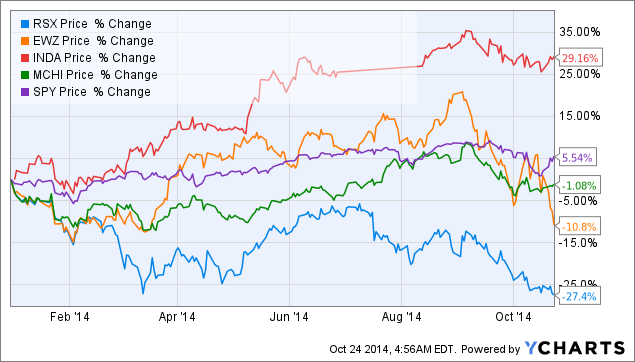Equal V Weighted ETFs Dividend And Risk Consequences SPDR S&P 500 Trust ETF (NYSEARCA SPY)
Post on: 21 Июль, 2015 No Comment

In this article I wish to highlight some of the differences (and surprising similarities) between Capitalization weighted ETFs and Equal weighted ETFs. I will compare the SPDR S&P 500 Trust (NYSEARCA:SPY ) with its equal weighted cousin, Guggenheim S&P 500 Equal weight ETF, (NYSEARCA:RSP ).
First: definitions and clarifications. A C apitalization weighted index or portfolio means companies that have a larger market capitalization (defined as price times number of shares outstanding) carry more weight in the index that smaller firms. If you look at SPY for example, you will find that Apple Inc (NASDAQ:AAPL ) and Exxon (NYSE:XOM ) total nearly 5% of the weight of the index.
In contrast, an E qual weighted index, all the companies have equal weight, regardless of their size. With RSP, AAPL and XOM combined carry merely 0.37% of the weight. Stated subjectively, a big up day for these two behemoths would have a noticeable impact on SPY but a negligible impact on RSP.
Another way of contrasting the two? With an Equal weight portfolio you invest an equal dollar amount in each company; with a Cap weight portfolio you invest more in the big companies and less in the smaller ones. I’ll show an example of this later in the article.
So what are some of the differences between the two? You might be surprised.
- First, since the Capitalization portfolio has a good chunk of its total funds in a smaller subset of stocks, you might expect it to be more risky than the very spread out Equal weighted portfolio. In fact, it is the exact opposite: RSP has a beta of 1.16 according to Yahoo finance, while SPY (basically by definition) has 1.00 as its beta.

Odd? Think about it: the former has more money in smaller firms, which tend to be riskier than large cap blue chips. Remember this when you read reports that suggest equal weighted portfolios perform better than their Cap cousins. You are not getting a free ride. They are more risky.
- Second, Cap weighted portfolios and ETFs chase after advancing stocks; Equal weighted ETFs trim their positions in them.
This is best illustrated with a lengthy example. Imagine two portfolios which hold only five stocks, A,B,C,D, and E, all of which sell for $20 a share at the start. They also have the same number of shares outstanding. You have $1000 to invest. At the start, both the equal and cap weighted portfolios look identical.
The Equal weight portfolio buys 10 shares of each stock; $200 for each of the five, totaling $1000.
The Cap weight portfolio places an equal amount of money in each company; since they all have the same market cap, $200 each for the five, also totaling $1000.
Now suppose company A triples to $60, and company E drops sharply to $5. Compare the two portfolios below.














